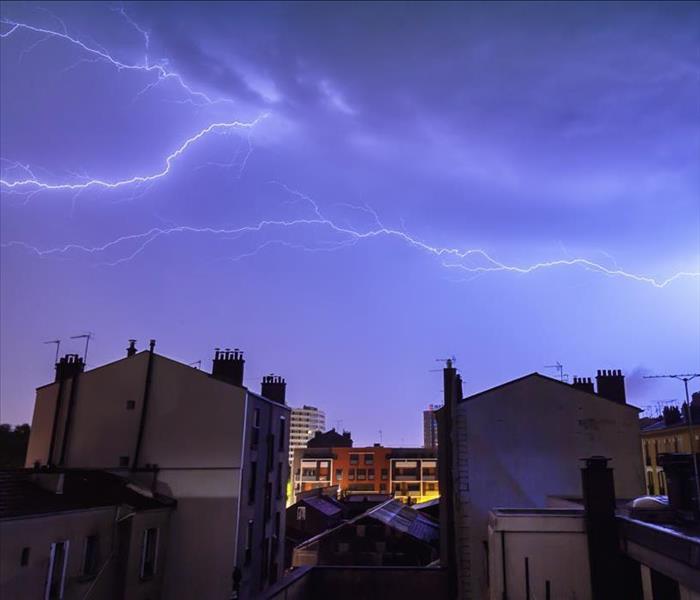Residential Lightning Hazards
6/17/2022 (Permalink)
Did you know that almost one-third of injuries sustained from lightning strikes occur indoors, as assessed by The Centers for Disease Control? You may be familiar with lightning safety when outdoors, such as the necessity to get out of the pool at the first rumble of thunder. However, indoor lightning safety is just as important. While lightning is dangerous any time of the year, lightning occurs most frequently during the summer, which means that now is the time to become acquainted with indoor lightning safety in order to protect your home and those living in it.
Lightning- if it strikes a residential structure- can be a serious fire hazard. According to Weather.gov, “each spark of lightning can reach over five miles in length, soar to temperatures of approximately 50,000 degrees Fahrenheit, and contain 100 million electrical volts.” All this considered, lightning is powerful enough to ignite detrimental fires in residential structures and the electrical currents sent through homes as a result of lightning can pose significant safety risks to those living in the home. In the next portion of this blog, we’ll share some helpful indoor lightning safety tips.
Keep Your Distance from Electrical Equipment
We’ve learned that lightning can contain 100 million electrical volts, so it is imperative that you refrain from using electrical equipment during thunderstorms in order to prevent electrical shock or fire. Because lightning can travel through electrical currents, like those employed by radios and televisions, it is crucial to refrain from using devices that involve such equipment, like a corded landline. Instead, stay informed using a battery-powered radio or your smartphone. It can also be helpful to purchase surge protectors to protect your electrical appliances in the event of powerful storms.
Avoid Plumbing and Water
Just as it is important to get out of the pool or the ocean during a thunderstorm when outdoors, avoiding water and plumbing indoors is recommended. Lightning can travel through a property’s plumbing, which makes showering, taking a bath, washing the dishes, and other activities utilizing water dangerous during a thunderstorm.
Shelter in the Safest Area Possible
Lastly, be sure to seek shelter in the safest area of your home. In order to do this, do not seek shelter on porches. Instead, move to an interior room of the home and keep your distance from windows and doors. It may also come as a surprise that it is recommended to stay away from concrete floors and walls, as lightning can travel through concrete walls and flooring.
Storm Damage Takes You By Surprise? Call SERVPRO
Taking the precautions mentioned in this blog can help protect your home and those living in it, but storms are unpredictable and powerful. If your home experiences storm damage, SERVPRO Team Wall can help. You can read more about our reputable Storm Damage Restoration services and the SERVPRO Disaster Recovery Team on our website or call us at (410) 229-0012 to speak with one of our knowledgeable team members. Let us help you make it “Like it never even happened” after any disaster, large or small.





 24/7 Emergency Service
24/7 Emergency Service
